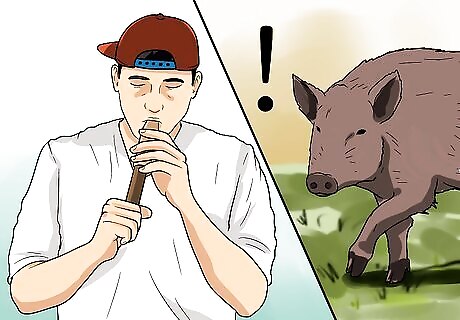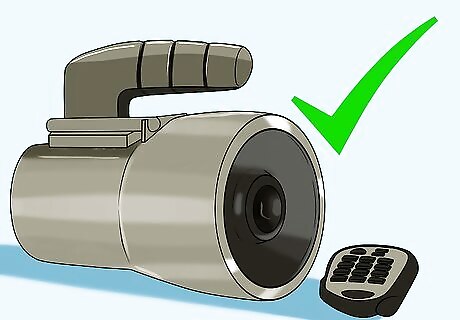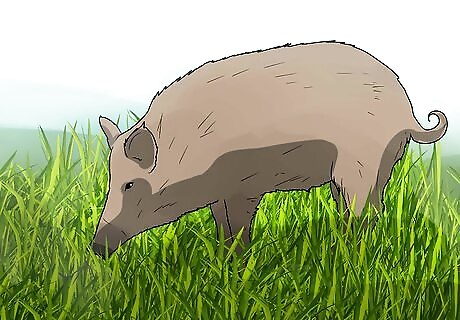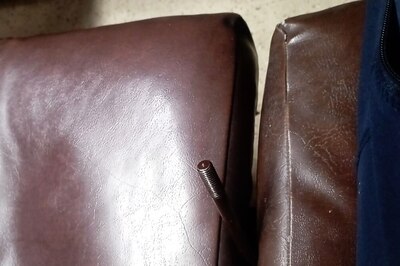
views
Choosing a Hog Call

Gravitate toward distress calls. Typically speaking, most wild hogs respond to the sound of distressed swine more than any other call. The sounds of distressed piglets are especially useful, but even the sound of distressed adult hogs might be useful in some instances. Piglet squeals appeal to the protective instinct of both sows and boars, especially when used during piglet season. Hog feeding sounds mimic the noises made by hogs while feeding. They're generally the next most effective after distress calls and may capture the curiosity of stationary wild hogs, but these calls won't often encourage distracted hogs to approach. Grunt calls are fairly common but aren't quite as effective. Even the highest quality grunt calls tend to mimic the sound of warning grunts. Hogs are aggressive by nature, so some may still respond to this noise, but many will opt to avoid the noise and the area it comes from. Some hunters have success with callers that are programmed with other animal noises. For instance, rabbit squealers and crow noises can appeal to the predatory instinct of many hogs. Coyote growls may scare some hogs off, but territorial hogs or those actively protecting their young may respond to the noise by charging it.

Opt for an electronic caller. Portable electronic callers are more practical and more accurate. They're easier to handle, and wild hogs generally respond to them more consistently than they respond to mouth-blown callers. Since electronic callers use real sounds recorded from actual hogs, the sounds are more accurate and more likely to work. Electronic callers are also easier to use since you can start the call recording and set it aside to continue playing. This frees both your hands and attention, making it easier to watch the hogs and handle your firearm. There are different types of electronic callers, so you'll need to do your research to determine which best fits your needs. Some callers come previously loaded with certain sounds, but many can be loaded separately with sounds from computer sound files, CDs, and DVDs.

Be wary of mouth-blown callers. While some hunters can have success calling hogs with a traditional mouth-blown caller, the odds are against the novice hunter who attempts to use one. Most mouth-blown callers are packaged as hog grunts, but oftentimes, these grunts more closely resemble those of whitetail bucks rather than wild hogs or other swine. As such, the standard mouth-blown caller doesn't often attract the attention of hogs and may even drive the hogs away.
Calling the Hogs

Wait for piglet season. If you opted for an electronic caller loaded with the sounds of distressed piglets, the best time to attempt calling and/or hunting wild hogs will be while mother hogs actually have piglets to care for. While the exact timing may vary by region, most hogs have piglets during late winter through the middle of spring. Squealing piglet calls are most effective during this time span. If you choose another type of hog call (adult distress calls, feeding sounds, grunts, or related animal noises), the season does not make much difference. Each of these calls will have roughly the same rate of success throughout the entire year.

Scout from a distance. Keep a distance between yourself and the wild hogs. Try to position yourself downwind of their location. If you're close enough to see and hear the hogs, you're close enough for the hog call to work. Positioning yourself downwind is still ideal, though, since the sound of the call will carry with the wind instead of being masked by it.

Allow the pigs to reach a standstill. Wild hogs are more attentive when they've stopped than they are while they're on the move. Wait until the passel of hogs is no longer on the move before attempting to call out to them. Hogs actively moving about tend to be fixated on accomplishing some task, like finding food, so they will be less curious about random calls. Hogs that are standing in one place while feeding or sleeping are more vulnerable to calls, though. The territorial nature of the hogs will come out while they remain in one area, so they'll be more likely to react to other hog noises during this time. Note that hogs at a standstill generally prefer weed patches and other areas of heavy cover, but a good hog call will still be able to reach them and draw them out into the open.

Call in short bursts. Play the call for approximately 30 seconds, then stop the recording. After a minute of silence passes, call to the hogs over another 30-second stretch. The timing of each call doesn't need to be precise, but you shouldn't play the call continuously. Short bursts of noise sound more natural and will evoke less suspicion than constant grunts or squeals. Some high-quality recorded calls will include natural pauses. These calls can be played without manually stopping them, but you should review the call beforehand to verify whether or not this applies to the one you have at your disposal.

Watch for the results. If the hogs are going to respond to the call at all, they'll usually do so within the first few attempts. Keep an eye on the passel as you play the call to watch for shifts in behavior. Oftentimes, a call that successfully reaches one hog will reach many hogs, so be prepared for more than one hog to come out into the open. If your call does not produce results after five or six tries, it might be best to try another option. You could consider a different type of call or a different position. Alternatively, you may also want to try again after the hogs change location or switch activities.




















Comments
0 comment